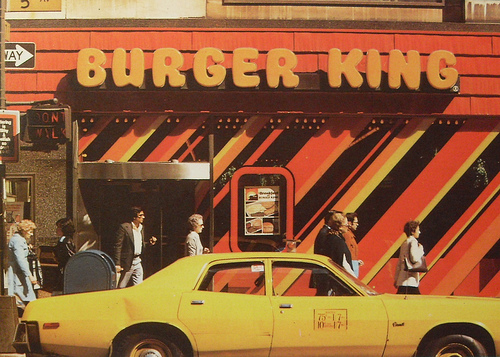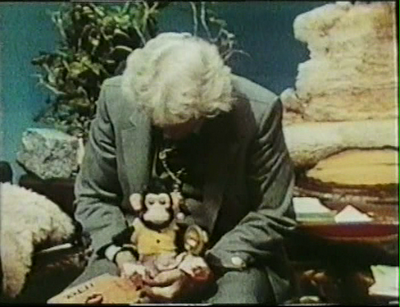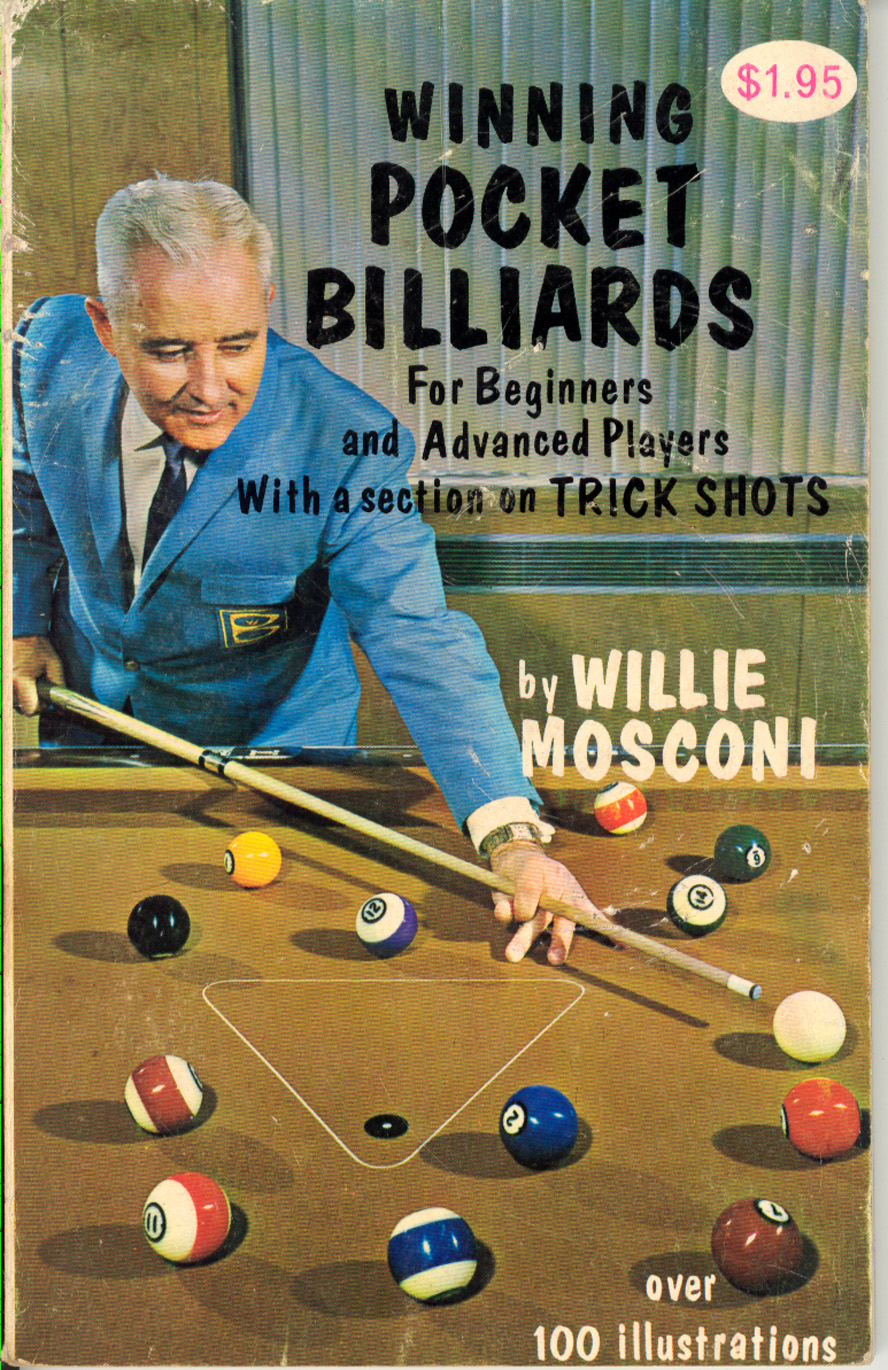Here’s a classic 1992 homage to the mundane in which Andy Warhol chows down on Burger King. It’s a passage from Jørgen Leth’s 66 Scenes From America. The interminable post-meal period when Warhol prepares to speak was improvised by the Pop Artist.
You are currently browsing the archive for the Videos category.
Tags: Andy Warhol, Jørgen Leth
Sky News report about a South African family with a pet hippo.
Nope, no idea.
And carbon-based scone-ordering was suddenly threatened. (Thanks Geekosystem.)
Gotta be uncomfortable for the monkey. And for everybody else.
Ralph Arlyck’s 15-minute 1970 film profiled his 4-year-old neighbor Sean Farrell, who lived in a Haight-Ashbury hippie household with his parents and whoever else drifted through. The short doc became quite the sensation because the tyke discussed his marijuana use. In 2005, there was a long-form follow-up doc called Following Sean.
Tags: Ralph Arlyck, Sean Farrell
Robert Krulwich has a story on NPR about meat-eating furniture, including the flypaper clock featured in this video. At least it doesn’t show the coffee table that guillotines and devours mice that it attracts with cheese bits. No joke.
Tags: Robert Krulwich
China simply doesn’t have this type of ingenuity. (Thanks Reddit.)
“God’s Angry Man,” Werner Herzog’s 1980 look at Los Angeles televangelist Gene Scott, follows the colorful Stanford grad who screamed at and threatened his television flock with pro-wrestling flair. Herzog’s portrait captures the holy man at the height of his powers. What became of Scott in the years after the film? He divorced and remarried in his dotage, becoming wedded to a pretty 32-year-old woman named Melissa, who was previously known as porn star “Barbie Bridges.” Scott, who died in 2005, was remembered in a Los Angeles Times obituary. An excerpt:
Gene Scott, the shaggy, cigar-smoking televangelist whose eccentric religious broadcasts were beamed around the world, has died. He was 75.
Scott died Monday after a stroke, family spokesman Robert Emmers said.
For three decades, Scott was pastor of Los Angeles University Cathedral, a Protestant congregation of more than 15,000 members housed in a landmark downtown building.
In the mid-1970s, Scott began hosting a nightly live television broadcast of Bible teaching. His nightly talk show and Sunday morning church services were aired on radio and television stations to about 180 countries around the world by his University Network.
Scott was most recognizable by his mane of white hair and scruffy beard.•
Tags: Gene Scott, Melissa Scott, Werner Herzog
I previously posted a clip of a 1950s housewife on LSD, but let’s see what acid does to a girl with an orange.
Tags: Larry Fine
A fascinating five-minute clip about the landmark NYC magazine, Punk, which began publishing in 1975. The mag featured interviews conducted by writer Legs McNeil, who, according to the narrator of this British doc, was encouraged to ask his subjects “the dumbest questions because punk…is anti-intellectual.” I don’t know that McNeil really required much encouragement. I interviewed him once and he was (unsurprisingly) a huge asshole. Fuck you, Legs. (Thanks to The Documentarian.)
Tags: Legs McNeil
Even the guts of Paris look beautiful. (Thanks Open Culture.)
After watching John Samson’s infamous, trippy 1977 documentary, “Dress for Pleasure,” which profiles leather, rubber and vinyl fetishists, I don’t really have any better idea why some people gain sexual gratification from dressing in these materials. But it’s still a powerful movie that’s hard to look away from. It also gives a glimpse into Malcolm McLaren’s SEX clothing shop in London and serves as a pretty great fashion documentary of the type of punk wear that his partner Vivienne Westwood later brought to the mainstream. I would point out that several bare breasts make this film NSFW, but if you’re watching fetish documentaries at your desk, you obviously stopped caring long ago. (Thanks to The Documentarian.)
From second-degree burns to completely healed in 96 hours.
Scott Brusaw’s solar-powered glass-based roadways trap the sun’s power and melt snow. (Thanks Bioscholar.)
Tags: Scott Brusaw
“See a baby doll take a bubble bath in a coffee can,” says the announcer of this trailer for Attack of the Puppet People. I can’t say it was on the agenda, but sure, why not, I’ll have a look.
He emerges drunk, surly and ready to watch some football. No, he’s not going to your sister’s house. (Thanks Reddit.)
Only 54 miles per hour but still pretty cool. (Thanks Open Culture.)
The twisted geniuses at Found Footage Festival uncovered this inexplicable 1993 movie which tells the story of life on Earth in 2013. Dropping dead in 2012 has never looked so good. Also: Nut-punches will survive the apocalypse.
As this 15-minute video shows, Silicon Valley emerged as the center of the tech world due to a dispute about semiconductor research among scientists in 1957. A mutiny of sorts by eight employees of transistor inventor William Shockley paved the way for the area to become the nonpareil computing community. An excerpt from a New York Times article about the scuttlebutt:
“SEPT. 18, 1957: Revolt of the Nerds
Fed up with their boss, eight lab workers walked off the job on this day in Mountain View, Calif. Their employer, William Shockley, had decided not to continue research into silicon-based semiconductors; frustrated, they decided to undertake the work on their own. The researchers — who would become known as ‘the traitorous eight’ — went on to invent the microprocessor (and to found Intel, among other companies). ‘Sept. 18 was the birth date of Silicon Valley, of the electronics industry and of the entire digital age,’ says Mr. Shockley’s biographer, Joel Shurkin.”
Tags: William Shockey
Numbers and those who crunch them are all the rage in sports today, but as this 1959 video of the Case Institute of Technology basketball team shows, it’s nothing new. The assistant coach was an undergraduate computer wizard named Don Knuth who fed data into an IBM 650 to help improve his school’s chances. Knuth went on to become a legend in the field of computing and is currently Professor Emeritus at Stanford University. An excerpt from an interview at computer history.org in which Knuth recalls the first time he saw a computer:
“Later on in my freshman year there arrived a machine that, at first, I could see only through the glass window. They called it a computer. I think it was actually called the IBM 650 ‘Univac.’ That was a funny name, because Univac was a competing brand. One night a guy showed me how it worked, and gave me a chance to look at the manual. It was love at first sight. I could sit all night with that machine and play with it.”
Tags: Don Knuth
A really well-made film that was apparently originally shown in movie theaters.
Before pro sports was a multi-billion-dollar business and athletes needed to be gigantic and juiced, a pool cue and incredible hand-eye coordination was sufficient to make someone a national star, even if they possessed a paunch and appeared unable to outrun a cigarette machine. Such was the case of Willie Mosconi, a working-class Philadelphia boy who displayed prodigious facility for the game from a tender age. Considered dapper by the modest standards of the pool hall, Mosconi was, along with fellow billiards wizard Minnesota Fats, one of the most famous “athletes” in America during the ’60s and ’70s.
Winning Pocket Billiards is a handsomely covered 1965 instructional book by Mosconi. There are a generous number of photos that show how to make the trick shots that Mosconi had mastered (as if) and a foreword that explains how he came to be so great at the game even though his father, who owned a pool hall, initially dreamed his son would become a great vaudeville performer. An excerpt:
“At the age of seven, Willie was launched on a round of exhibitions leading to a widely advertised match with another billiard prodigy, ten-year-old Ruth McGinnis. He won easily with a high run of 40. With the praise of an amazed audience still ringing in his ears, Willie ‘retired.’
As he tells it now, ‘I was disenchanted and confused. Earlier my dad had tried to prevent me from learning the game, and then he pushed me into it too fast.’
At the age of seventeen, the illness of both parents necessitated his leaving high school before graduation. In the Depression year of 1929, Willie became an upholsterer’s apprentice, starting at $8 a week and dexterously progressing to a piecework job for $40 per week before he was fired. He and his boss exchanged punches in disagreement over Willie’s request for a day off to watch the Athletics start winning the World Series.
Jobless and broke, Willie mustered courage, and revived a neglected touch at pool to enter and win a local tournament with a $75 first prize. He went on to finish third in the city championship that year. That might be the year that Willie cast the pattern of his life.”
___________________________
Mosconi showing off on I’ve Got a Secret, 1962:
Tags: Ruth McGinnis, Willie Mosconi
It’s that thing that’s about to devastate your medium, Bryant.
Tags: Bryant Gumbel, Katie Couric
Judging by this commercial for the erstwhile Indiana-based national restaurant chain, Burger Chef, patrons were allowed to sit on the roof and ride horses around the parking lot. There’s not a Burger Chef anywhere in the country anymore, but at its apex, only McDonald’s had more fast-food locations in America. Founded (almost incidentally) by Frank P. Thomas in 1957 in Indianapolis, the chain of hundreds of outlets was sold to General Foods in 1968. That company subsequently sold the restaurants to Hardee’s in the 1980s, which discontinued the brand. An excerpt about Burger Chef from the Encyclopedia of Indianapolis:
“In 1957 Frank P. Thomas opened a pilot restaurant at Little America Amusement Center to promote and sell the automated hamburger grill he had invented. Failing to sell the grill but successfully marketing his 15-cent hamburgers, Thomas instead opened the first Burger Chef.”
Tags: Frank P. Thomas



